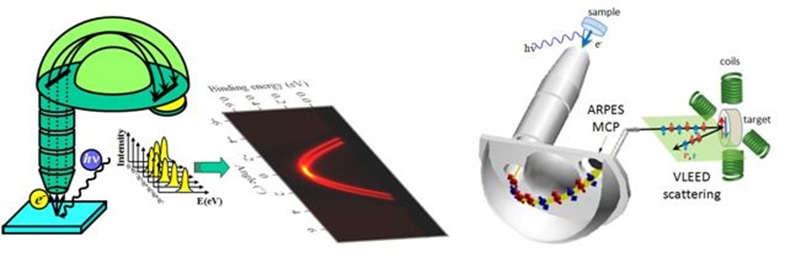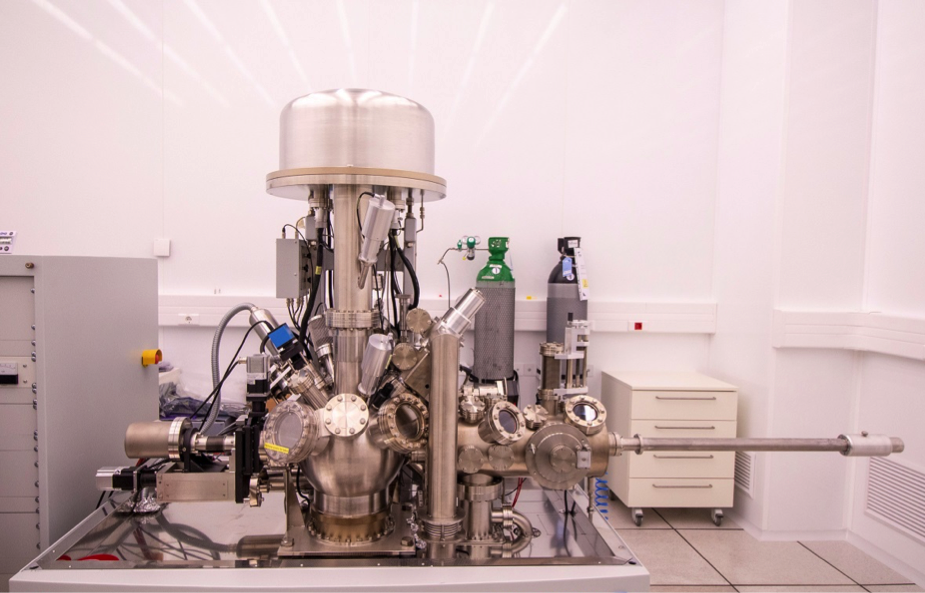Electron spectroscopy
IPES Inverse PhotoEmission Spectroscopy
IPES probes the empty density of states above the Fermi level of conduction/valence band in condensed matter. Energy of the impinging electron is varied while photons are detected at fixed energy, obtaining the spectrum of the density of unoccupied states. Combined with PES, it gives information on the surface electronic transport gap of sample.
RESPED/RESPES Resonant Photoemission Spectroscopy/Diffraction
Valence photoemission in resonance with core photo-ionization allows to study charge transfers between adsorbate species and the substrate surface and their time scale. If polarisation and emission angles are considered, specific atomic sites/bonds are probed. The technique is useful when electron-hole creation and transport phenomena are involved.
XPS X-ray Photoelectron Spectroscopy
XPS is a surface spectroscopic technique for quantitative measurements of the elemental composition or stoichiometry and the chemical state of the present elements, like their oxidation state and chemical bonds. XPS is highly surface sensitive, giving chemical and binding energy information from the a narrow region close to the surface.
ARPES Angle Resolved Photoelectron Spectroscopy
ARPES allows to measure directly the electronic band structure of crystalline solids. Electrons are detected retrieving information about initial state energy, momentum and spin.
UPS Ultra Violet Spectroscopy
Ultraviolet photoelectron spectroscopy (UPS), also described as photoemission spectroscopy (PES) if applied to measurements on solid surfaces, is suitable for measuring spectral features close to the Fermi level for surfaces or adsorbates, and particularly useful for determining work function and electronic properties of valence band of a material.
SXPSM Scanning XPS Microprobe
ESFOSCAN equipment performs XPS with monochromatic, micro-focused, scanning X-ray source. The X-ray induced secondary electron imaging provides a perfect correlation between imaged areas and spectroscopy. Moreover, UPS and LEIPS measurements can be performed at the same location to characterize the electronic band structure (VB and CB parameters).







